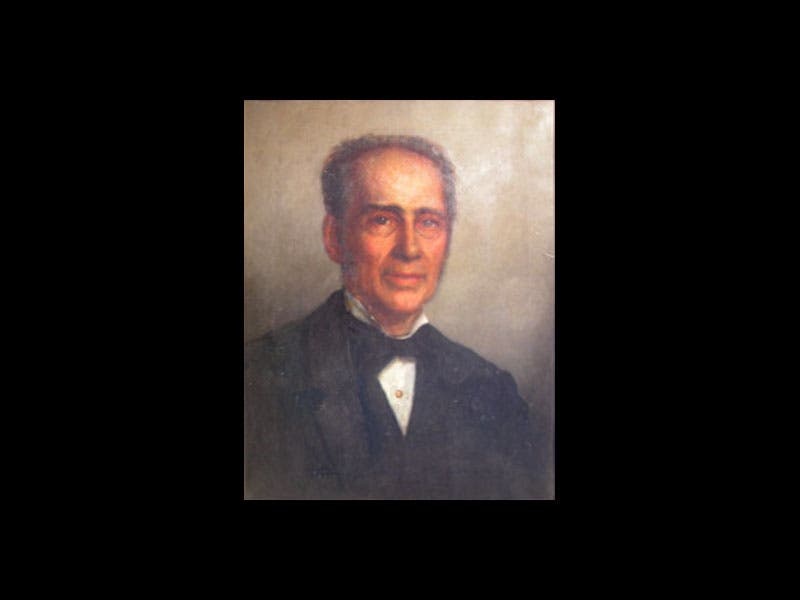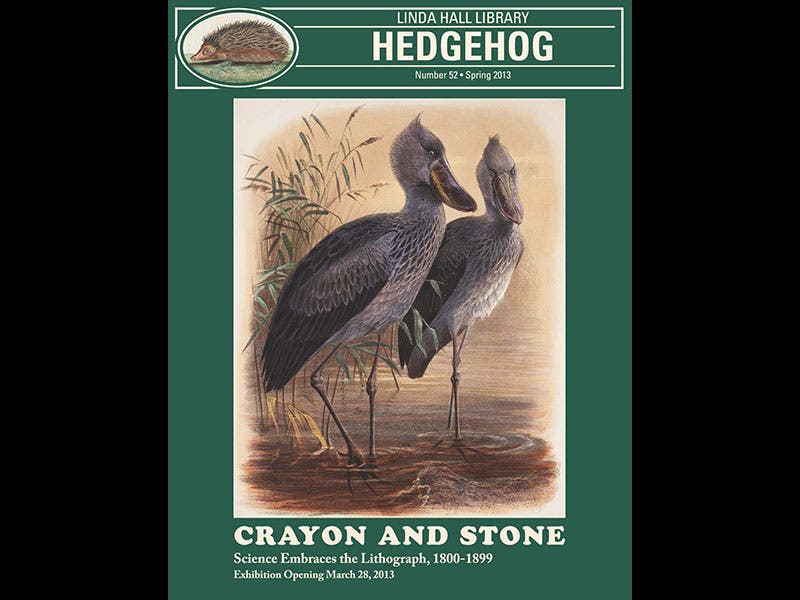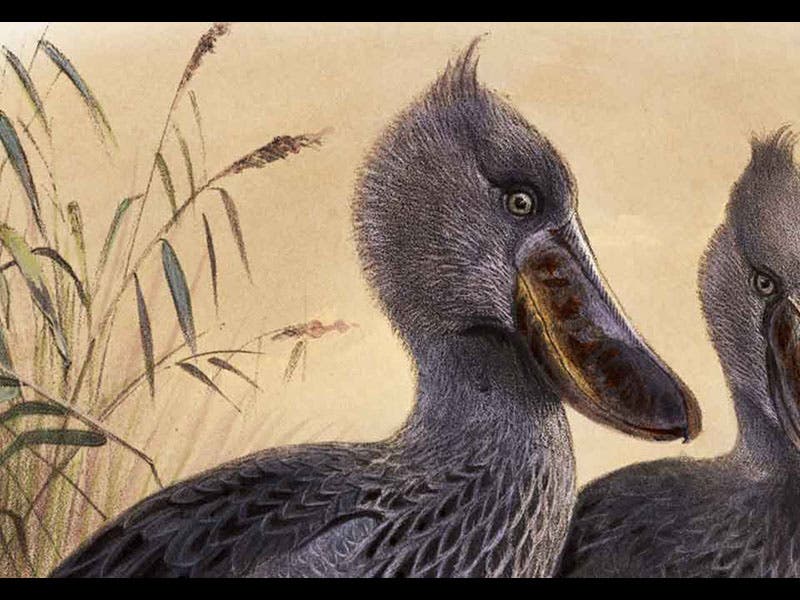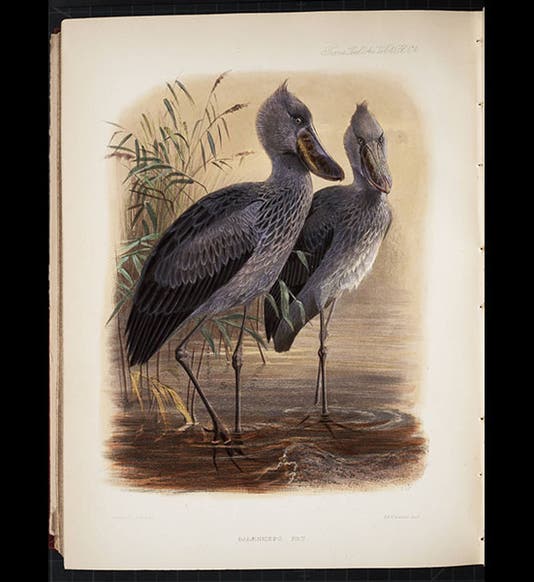Scientist of the Day - William Kitchen Parker





William Kitchen Parker, an English anatomist and zoologist, was born June 23, 1823 (see portrait, second image above). Parker was a relatively progressive anatomist, writing an important treatise on the vertebrate skull, and taking issue with his contemporary Richard Owen, who had argued that the mammalian skull is a series of variations on an ideal archetype. Parker, like his mentor T.H. Huxley, would have nothing to do with archetypes.
But when it came to Darwinian evolution, Parker was less willing to break with the past. In 1862, he published a paper on a newly-discovered African bird, the shoebill (Balaeniceps rex), and in the article he states: "If all the birds that have been, could be seen side by side with those that now are, it would be a goodly sight, no gaps to leap over, no missing links. Our knowledge of these things is in 'shreds and patches,' but we can imagine that He who provided the feast and invited the guests, did not seat unrelated strangers side by side." It is evident that Parker still subscribed to the notion of a Great Chain of Being, a persistent 18th-century idea according to which God created all things in a continuous linear sequence, from pond scum to man, with no gaps in the series. The only change rung by Parker is that his Great Chain was conceived over time, so that at any one instant, there appear to be gaps, but consideration of the past (and the future) would fill those in. It is an attractive notion, but it did not sit well in a Darwinian world.
One thing that Parker did get right was to choose a gifted artist to illustrate his paper on the shoebill. Joseph Wolf was as good as they came in the 1860s, and his painting of Balaeniceps rex was one of the finest natural illustrations of the entire century (first image). We chose this remarkable lithograph to adorn the poster for our 2013 exhibition, Crayon and Stone (third image), and it also graced the cover of the Spring 2013 Spring issue of the Linda Hall Library house organ, the Hedgehog (fourth image). Since we have no other Parker images to display, other than his portrait, we throw in a detail of Wolf’s shoebill, looking as handsome as this unlovely bird is ever likely to appear (fifth image).
Dr. William B. Ashworth, Jr., Consultant for the History of Science, Linda Hall Library and Associate Professor, Department of History, University of Missouri-Kansas City. Comments or corrections are welcome; please direct to ashworthw@umkc.edu.






